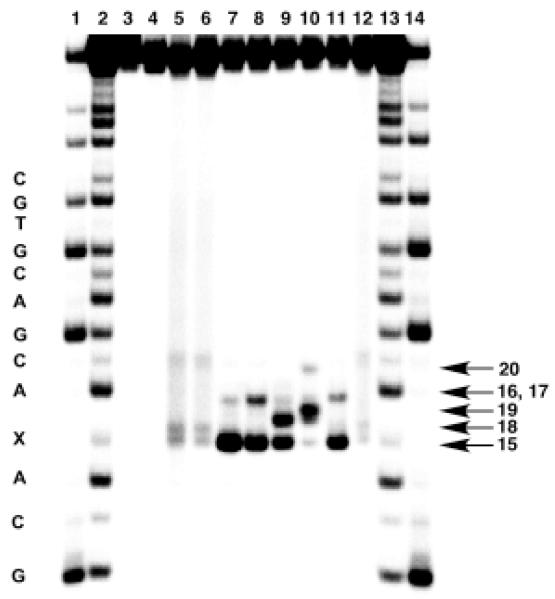Figure 4. Gel electrophoretic detection of 2-deoxyribonolactone lesion (5) generated by the reaction of TPZ with a C1′-radical in a 2′-oligodeoxynucleotide.
The C1′-radical was generated in the presence of TPZ by photolysis of the 2′-oligodeoxynucleotide radical precursor 32P-GTCACGTGCTGCA-12-ACGACGTGCTGAGCCT in sodium phosphate buffer (10 mM, pH 7) containing NaCl (100 mM). The product was then treated with N,N′-dimethylethylenediamine (100 mM), piperidine (100 mM), or piperidine (100 mM)/β-mercaptoethanol (50 mM) as described previously.75 Lanes 1 and 14, Maxam-Gilbert G specific cleavage reaction; lanes 2 and 13, Maxam-Gilbert A+G specific reaction; lanes 3-5 contain samples treated under aerobic conditions: lane 3, non-photolysed; lane 4, non photolysed + piperidine (100 mM), 30 min, 90 °C; lane 5, photolysed; lanes 6-12 contain samples that were photolysed with TPZ (1 mM) under anaerobic conditions: lane 6, no further treatment; lane 7, piperidine (100 mM), 20 min, 90 °C; lane 8, piperidine (100 mM), 20 min, 37 °C; lane 9, piperidine (100 mM), β-mercaptoethanol (50 mM), 20 min, 37 °C; lane 10, N,N′-dimethylethylenediamine (100 mM), β-mercaptoethanol (50 mM), 20 min, 37 °C; lane 11, N,N′-dimethylethylenediamine (100 mM) 20 min, 37 °C; lane 12, β-mercaptoethanol (50 mM), 20 min, 37 °C.

